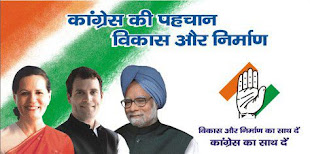Dilip Ghosh
Like the rest of the World, India, particularly the meteorologists of the country will be observing the World Meteorological Day on the 23rd March, 2010. It is on this day in 1950, the World Meteorological Organisation was founded as an unit under the United Nations with its headquarters at Geneva to highlight the WMO’s efforts to mitigate human suffering and support sustainable development. This year’s theme for the World Meteorological Day is ‘60 years of service for the safety and welfare of the mankind.’
Unlike in the past, meteorology today covers not just weather science but the entire gamut of earth sciences. It is being used to predict natural calamities like floods, droughts and earthquakes. It is also being used by mariners and those who manage road and air traffic. All this, however, became possible with the advent of meteorological observation towers, weather balloons, radars, artificial satellites, high speed computers and also different mathematical models. Needless to say that India which produced great weather experts in the past, continues to contribute significantly to the growth of this science at present.
It is well known that weather related data from Indian satellites is now used by several countries. Since August 1983 when the first INSAT series of multi-purpose satellites, INSAT-1B was launched, India has put 10 INSAT satellites into the space for weather observation. The launch of INSAT-1 A was aborted. Later in September 2002, ISRO launched a dedicated weather satellite Kalpana- 1 into a Geo- stationery orbit. Besides, India has put into the space 10 remote sensing satellites of which the latest one was Oceansat II. Designed to work for five years, the satellite was launched on September 23 last year from the ISRO’s launch pad at Sriharikota on the Bay of Bengal coast with a PSLV rocket along with six other satellites of different countries. The satellite is giving yeoman’s service by identifying potential fishing zones, sea-state forecasting, coastal zone studies, weather forecasting and climate studies. Oceansat data on the presence of fish schools are provided to various fishing harbours in Tamil Nadu, Andhra Pardesh and Kerala in the local languages of the states. Director of Vikram Sarabhai Space Centre, Dr. K. Radhakrishnan, says, a study conducted on 700 fishing vessels in the three states revealed that the Oceansat data have helped them saving fuel and time in locating the fishes. He said, “ On an average, a fishing vessel saved anything between one to six lakh rupees per year.”
Besides deploying a large number of satellites in the space for weather observation, Indian scientists have been regularly visiting Antarctica since 1981 for weather and hydrological studies. To understand the oceanic processes and their application for the benefit of the peoples of the Indian Ocean region, India took a leading part in the establishment of Indian Ocean component of Global Ocean Observing System (IOGOOS). At present, it is also coordinating an international project on the Indian Ocean that would provide periodic profiles of temperature and salinity of the upper ocean up to a depth of 2000 metres to understand the structure and dynamics of the upper ocean that influence climate. The importance of the project lies in the fact that although, the oceans play an important role in climate change, the symbiotic connection between ocean and atmosphere particularly in terms of exchange of heat and mass is still not well understood.
Like IOGOOS, the WMO has been sponsoring several other programs to understand the better phenomenon of climate change across the globe. Its programs have three goals. The first one is to improve systematic weather and climate observations and to reconstruct the past climate periods. The second and third objectives respectively are redefining climate modeling to reduce uncertainties inherent in long term climate prediction and ensuring that the advances in climate science contribute to sustainable development. While continuing with the efforts to better understand the phenomenon of climate change, the WMO has also sounded a caution that over the one and a half decades the number of disasters of hydro-meteorological origin has increased significantly. World wide, recurrent drought and desertification seriously threaten the livelihood of over 1.7 billion people who depend on the land for most of their needs. It says that the changes in the climate observed over the past few decades will continue to present urgent and growing challenges to many aspects of our lives including health. A WMO document, however, says that the nations across the globe have still not realized that the future cost of inaction to protect climate is expected to exceed by far the cost of timely action. While there are phenomena like El –Nino in the Pacific Ocean and Sun entering a 11 year long hot phase, humans are also contributing to global warming through fossil fuel burning. Former Secretary General of the WMO, Prof. Godwin O. P. Obasi has warned “ The measures contemplated in mitigating climate change so far are inadequate to protect our future climate.” He stressed that the international community should, therefore, commence action now through the United Nations Framework Convention on Climate Change and the Kyoto Protocol to adequately curtail the emission of green house gases and address the key scientific issues.
There will be meetings, seminars and other functions in different parts of the country where weather men will exchange ideas, share experiences and deliberate on how best to use the knowledge of this fledgling science for the welfare of not just Indians but the entire mankind.


























0 Comments